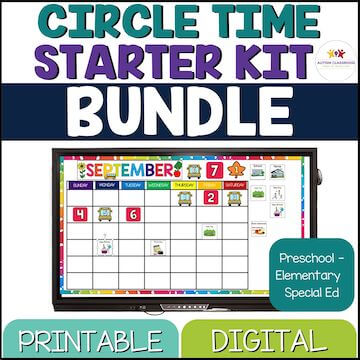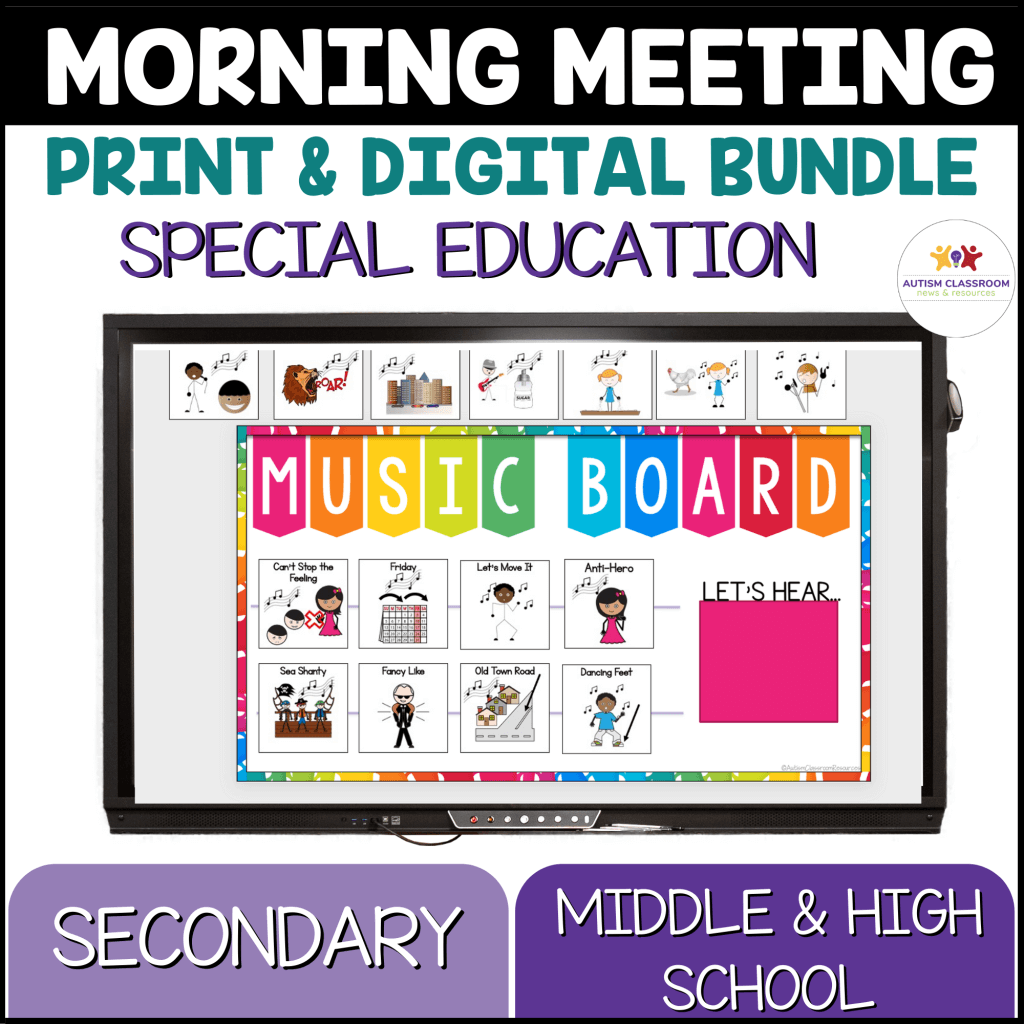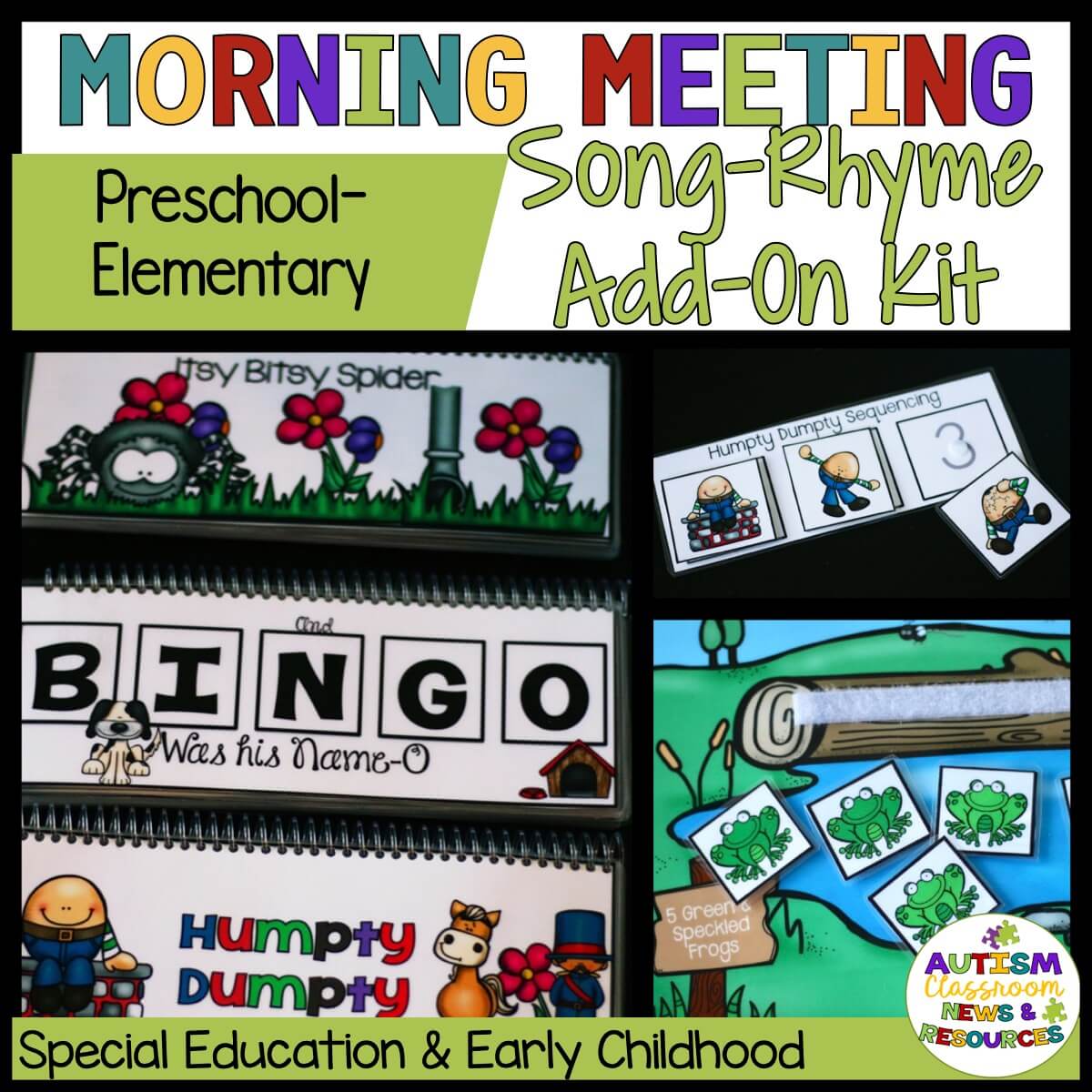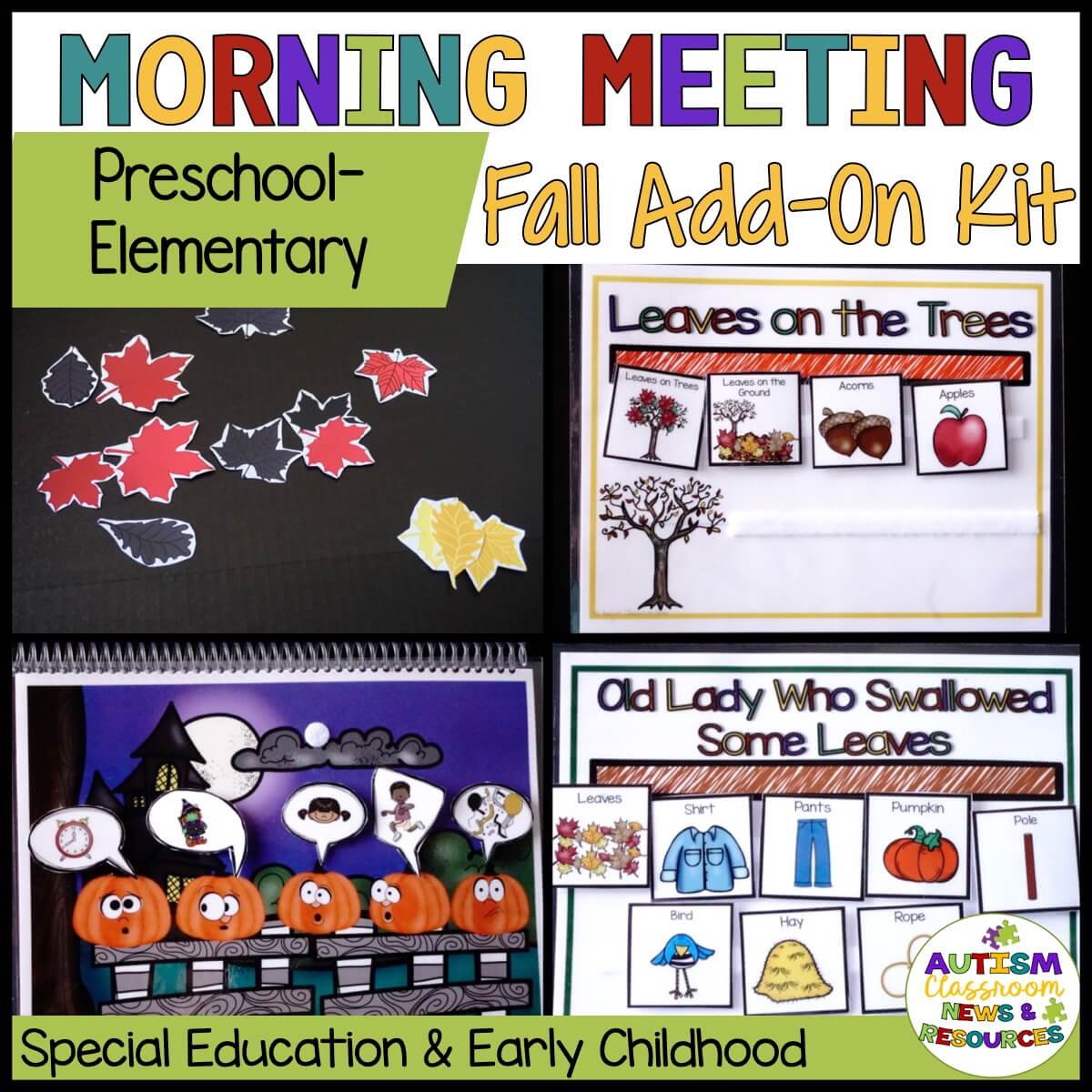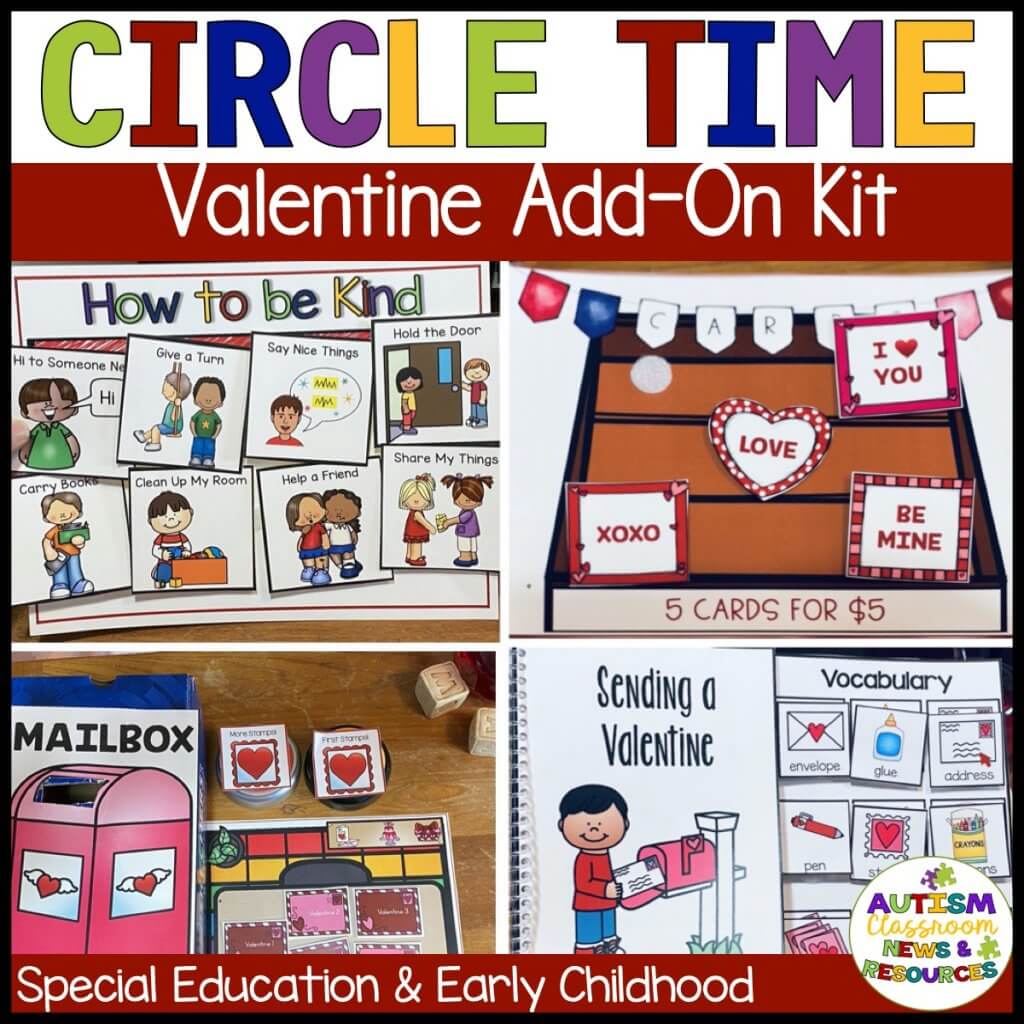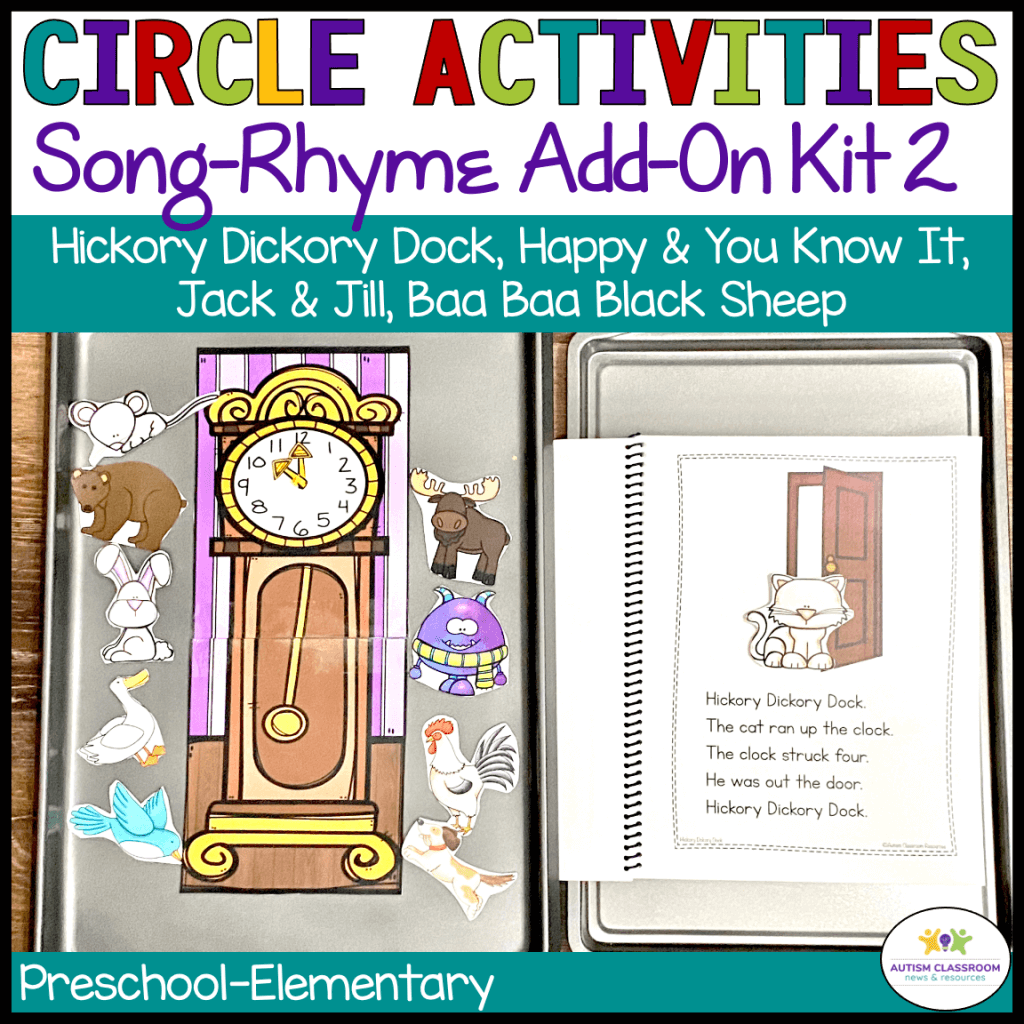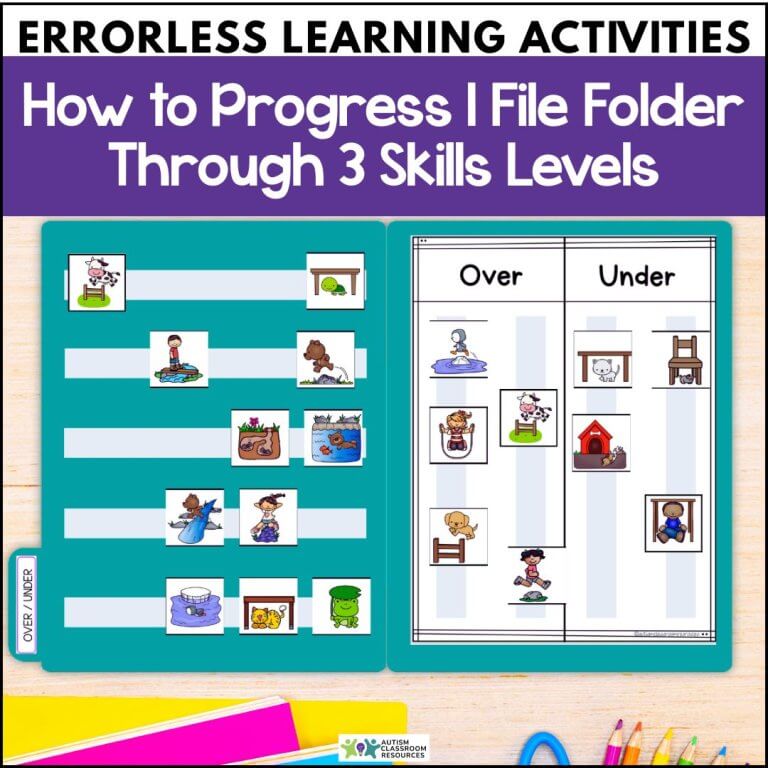Whole group instruction is often one of the most challenging parts of working in a special education classroom, particularly in a self-contained classroom. Sometimes just keeping students engaged throughout the group time is the first challenge. But even when you get them engaged, how do you assure that they are learning?
Why Bother with Whole Group Instruction?
Let’s start with WHY we should be doing whole group instruction. As a behavior analyst, I have met many teachers and behavior professionals who think that, particularly for students with autism, that we shouldn’t focus much on whole group (or sometimes even small group) instruction. And, for a few students we probably do want to spend time focusing in more individualized instruction at first.
But, group instruction is key to helping our students move toward learning in more environments. It expands their learning opportunities. And it moves them toward more mainstream and inclusive options. I talked more in Episode 104 of the podcast about how and why group instruction so essential for our students. And in Episode 105 I talked about the types of skills we can develop using whole group instruction.
This post has 5 whole group instruction strategies you can use to both keep students engaged and address specific instructional goals. Because let’s face it….if your students aren’t engaged, they aren’t learning.
Three Stages of Instruction
In episode 105 I talked about the 3 phases of any type of instruction that are critical to address for learnings with autism: explicit, generalization, and maintenance. All 3 of these stages are important in how we put our instruction plans together.
For many of our students, explicit instruction is the concentrated, highly individualized instruction the teacher provides in small groups or sometimes 1-1 . This is where we introduce concepts and practice them with fewer distractions.
Generalization is when we are expanding that learning to new people, materials and environments. This the a great phase for group learning for students to take skills they learned in small group and expand it to a larger context. They can also be really helpful in teaching maintenance, where we are working on the student continuing to practice and use the skill. Both maintenance and generalization are often areas where students with ASD struggle, so the opportunity to expand them to more inclusive situations is key.
Whole Group Instructional Strategies
As I talk about the different strategies for whole group instruction, it’s important to remember that it doesn’t all have to be teacher-led. In addition, while I’ll be describing them as a behavior analyst, we need to recognize that these strategies often overlap between disciplines but might have different names.
I specifically remember watching a video once of Verbal Behavior Naturalistic Instruction strategy examples once with a speech pathologist friend. I commented on what a great example it was of naturalistic instruction. She responded that it looked like good incidental teaching and good speech therapy.
Always remember that it’s the elements of the instruction, not their “name” that is the critical element in its effectiveness. And we need to strive as an educational community to recognize the similarities and collaborate.
Whole Group Instructional Strategy #1: Discrete Trials

Discrete trials are traditionally a form of explicit instruction. While they are often provided 1-1 or in small groups, there is research that indicates they can be effective as in whole group instruction as well.
I won’t go into a lot of detail about how to provide discrete trials, because I’ve done that with an overview blog post on trials here and talked about them in this podcast as well.
It’s critical to recognize as well that discrete trials do not always have to be drills and they should ALWAYS be conducted using positive reinforcement and not aversives. Our understanding and use of trials has expanded significantly over the last 30 years and we need to make sure we are using them when they are useful and fit the characteristics of the individual.
One of the myths about discrete trials is that they should always be used as 1-1. Trials are a teaching strategy–they aren’t an instructional program. They are merely a tool we use for instruction. And I talk about the research on the effectiveness of using them in groups in this post.
Some ways you might use them in group instruction include
- giving a direction to one student at a time and having the time between trials be a bit longer
- using response cards (see below) so that all the students are completing the same trial at the same time
- having 1 student complete the trial instruction in one way while others complete it in different forms. For example have one student find the date on the calendar on the board, other students can find it on a ring of numbers. Each can be reinforced individually based on their responses.
Typically discrete trials can also be used with some of the other strategies I’ll talk about as well.
Whole Group Instruction Strategy # 2 Prompting
We use prompting all the time in combination with other strategies in our instruction. Prompting is what allows us to help the students gets the right answer so they get reinforced. But obviously, as always, fading out those prompts is as critical in whole group instruction than in any other instruction.
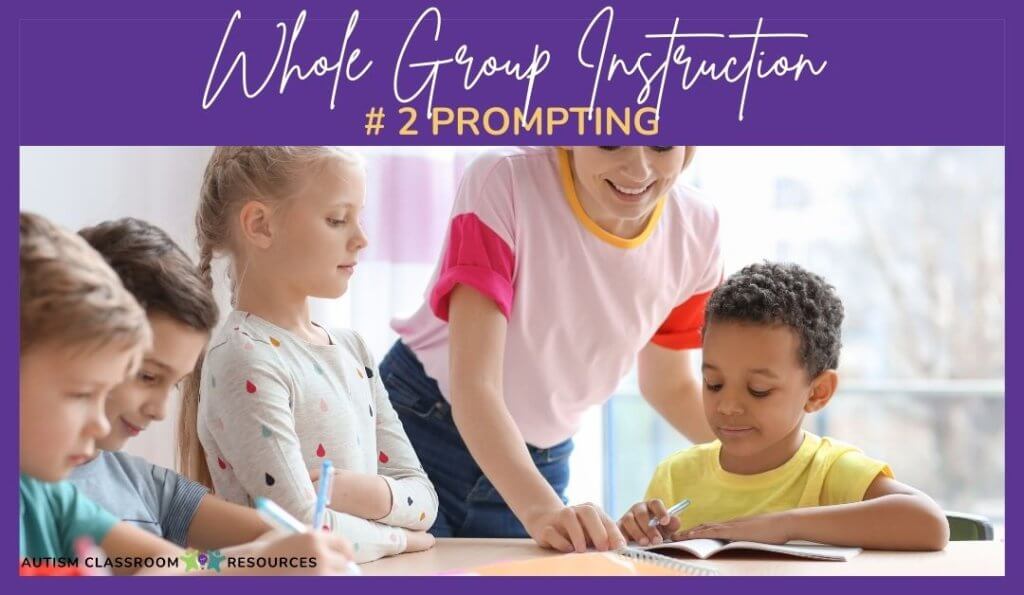
In whole group instruction, I highly recommend when possible to use prompting from behind the student. It’s easier to fade out the prompting than when it’s part of the group instruction.
However, keep in mind that systematic use of fading procedures like least-to-most or time delay are important here so the student doesn’t begin to turn around to attend to the prompter. You want the student to remain focused on the group instructor and fade out the assistance. This really highlights the need for good visual supports by the group leader as well.
#3 Incidental Teaching and Pivotal Response Training
Both of these strategies are ABA forms of Naturalistic Developmental Behavioral Interventions and I talk about them more in this episode of the podcast. I also have ideas for using naturalistic instruction morning meeting in this post.
You can also get more details and a video tutorial on incidental teaching in this post. And a description and overview of PRT here.
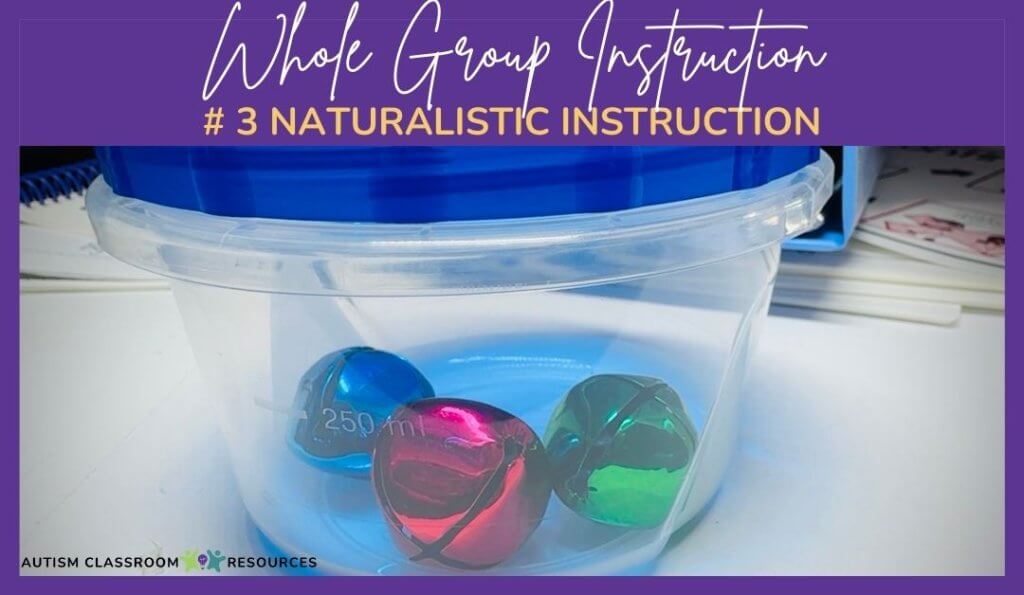
Here is a quick example of how we would use it in group instruction like morning meeting. I hold out an instrument, and I wait for the student to ask me for it. It’s in a closed container. I know the student really likes the Jingle Bells.
I know they like to play them (possible reinforcer), so I’ve put the bells in a container they can’t open (situational sabotage). Then, I’m waiting for them to tell me that they want it in some way. When they do that, they get the bells (the reinforcer). In PRT I would repeat this several times giving multiple opportunities.
#4 Cloze Techniques for Whole Group Instruction
Cloze techniques are a fun one that can be used getting students to verbally fill in familiar statements or use an AAC device like a simple switch to voice the routine, repetitive phrase in a sentence. For instance, when singing Hickory Dickory, you might try to get the students to complete the phrase.
So you would sing “Hickory Dickory Dock” and pause to see if the students will fill in “the mouse ran up the clock.” You’re trying to get the end of that phrase.

Another example: ♫ The itsy bitsy spider went up the water… ♫ and then you’re leaving a blank so that you get them to continue those common things, in this case “spout”.
♫ Ring-around the rosie, all fall… ♫ and we’re waiting for some kind of response. It might be a verbal response, it might be a gesture response but we’re giving them that close opportunity to close out that loop of language with a familiar something that they’re hearing.
#5 Response Cards
Finally, one of my favorite ways for students to respond is to use response cards. Response cards are when students have a card that they write or find their answer and hold it up for the teacher to see.
Advantages of Response Cards Include:
- Every student answers every time, so there are more opportunities for each student to practice each question/answer. This means that every student is getting more learning opportunities for reinforcement.
- Since every student answers every question, there is less waiting time and student engagement is increased.
- Because there is less waiting, or down time, students’ behavior is often improved because they are more engaged.
- And finally, the teacher can scan the responses and see which students are getting answers right and which are struggling. This is harder to do with choral responding in which every student responds verbally.
So you can use response cards that are dry erase cards or boards for students to write the answer on. You can have multiple choice options where they hold up a letter. Use a low-tech option where you do yes/no with thumbs up and down. Or use a higher tech option using something like Kahoot.
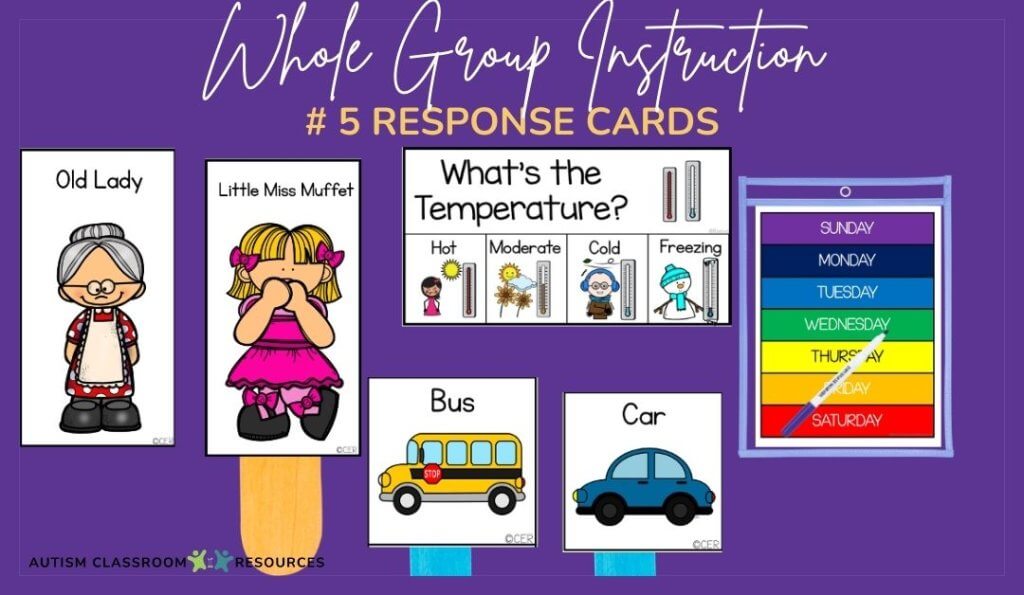
I love to use response cards in morning meeting or circle time as well as small group instruction. You can grab a free days of the week response card in the free resource library below. Students circle or mark with a clothespin which day of the week it is and hold it up for the teacher to see.
I’ve done similar things with calendars. We also have other response cards in our morning meeting / circle time starter kits that you’ll find at the bottom of the page.
Conclusion
So those are 5 evidence-based strategies that you can use for effective whole group instruction. Which to use and when largely depends on the makeup of the classroom as well as the students’ individual skills.
Don’t forget to grab your free days of the week response card below. And if you are looking for more ideas for morning meeting check out the resource links below and the morning meeting kits from my TpT store!
Grab Your Free Response Cards
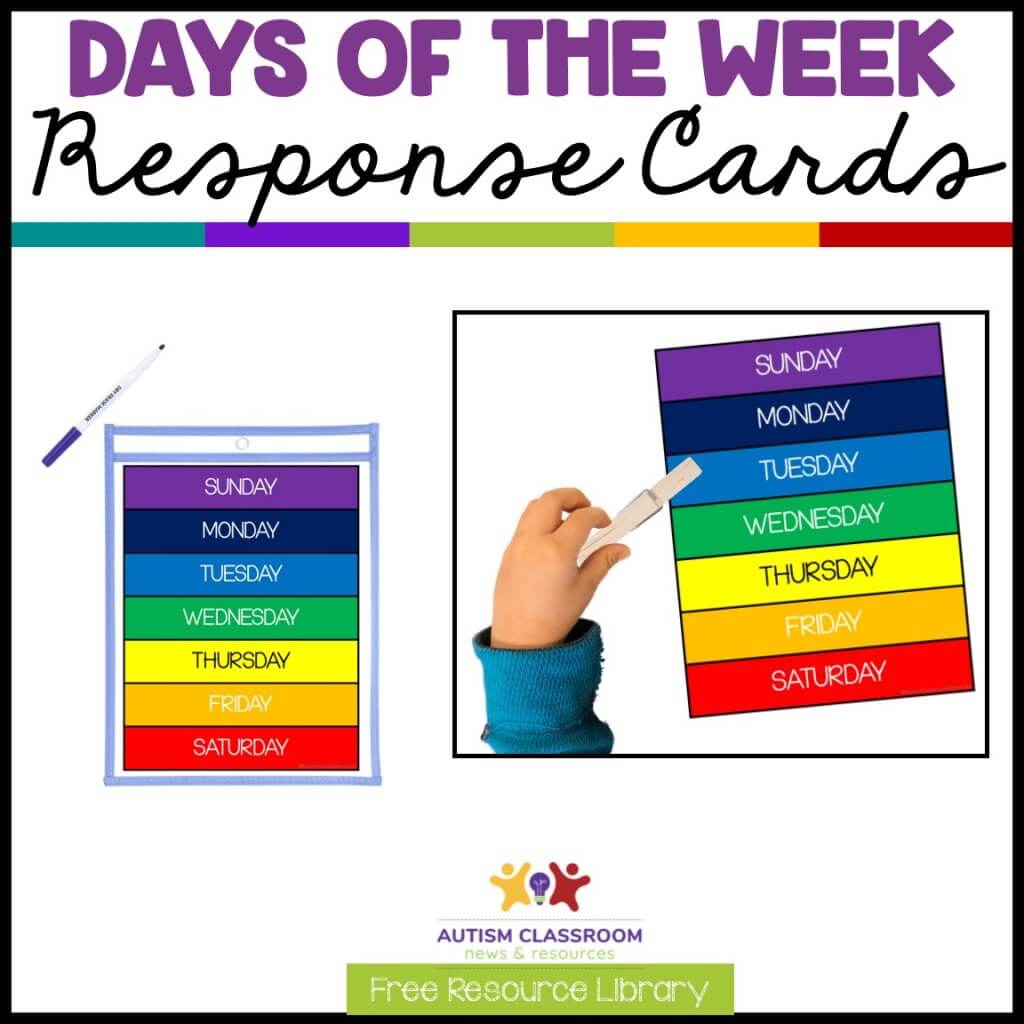
These response cards are great for using in morning meeting with any age. They come in 2 sizes, Plus I’ve included 1 set that is full color and another that is minimal color to save ink.
Grab them from the Free Resource Library. Click below to navigate or join the free library.


